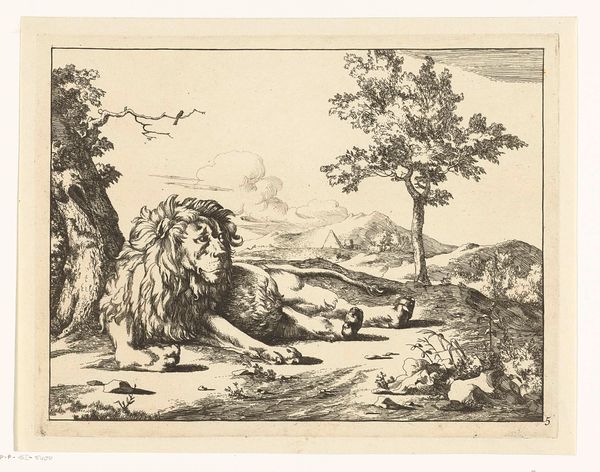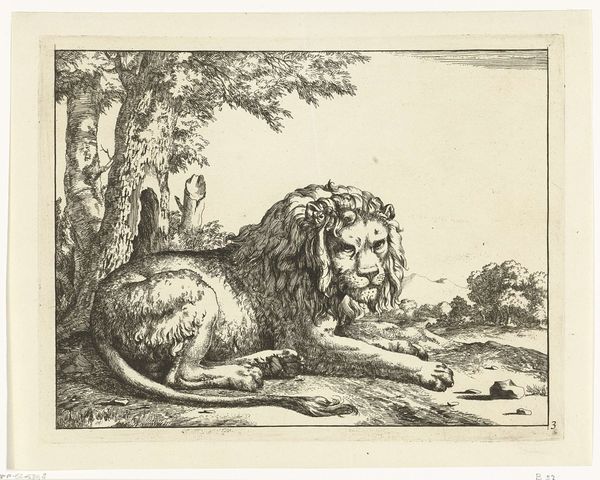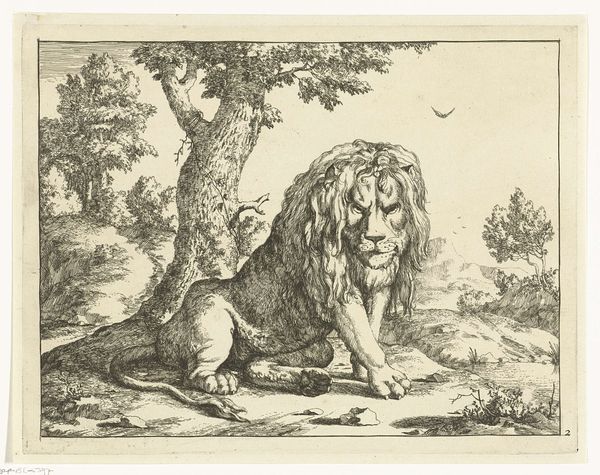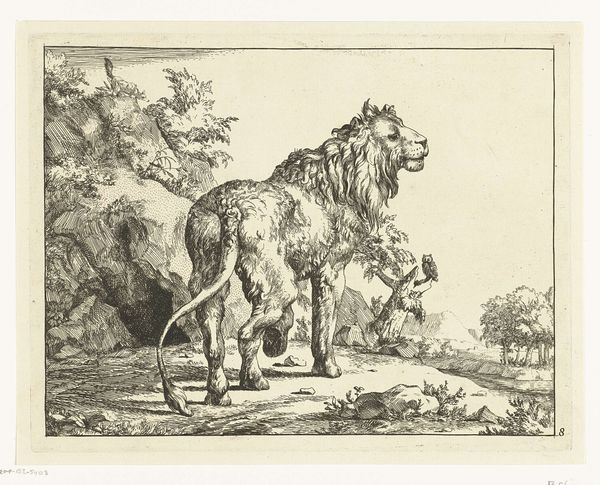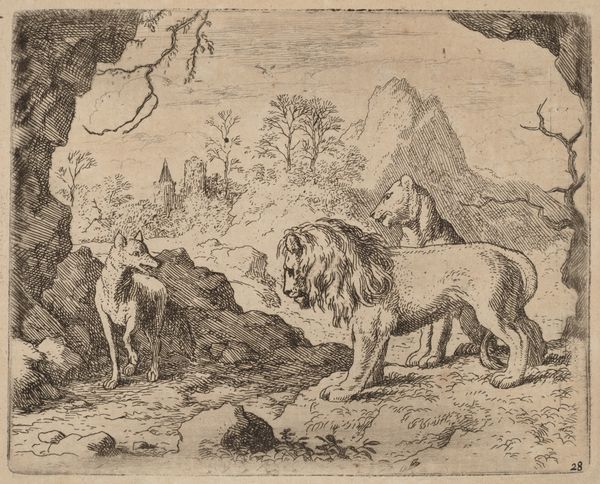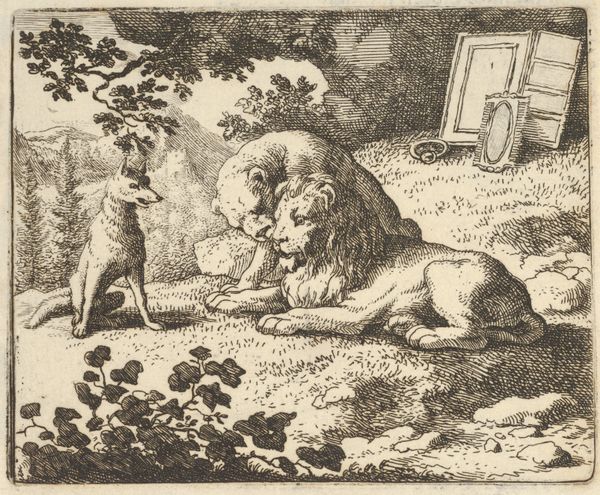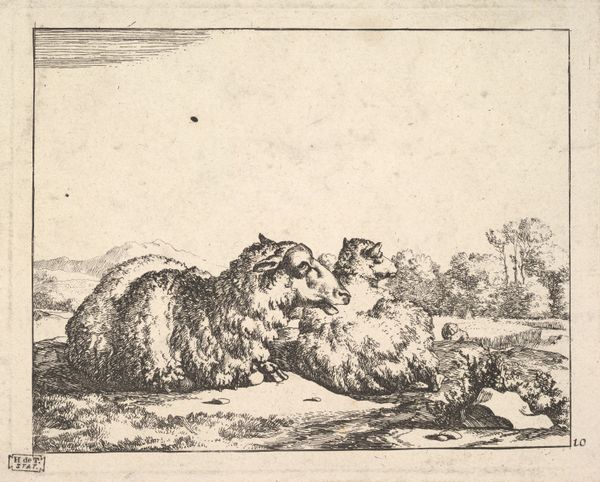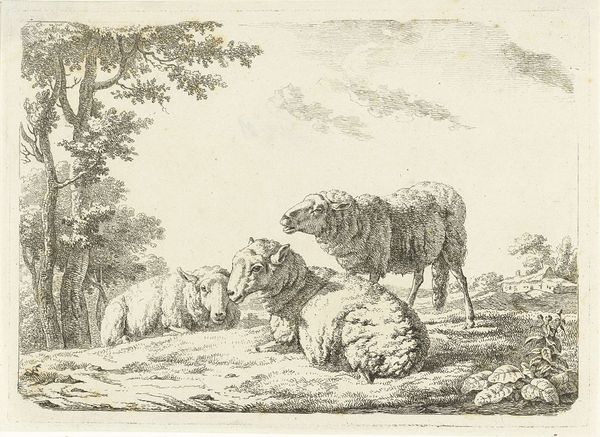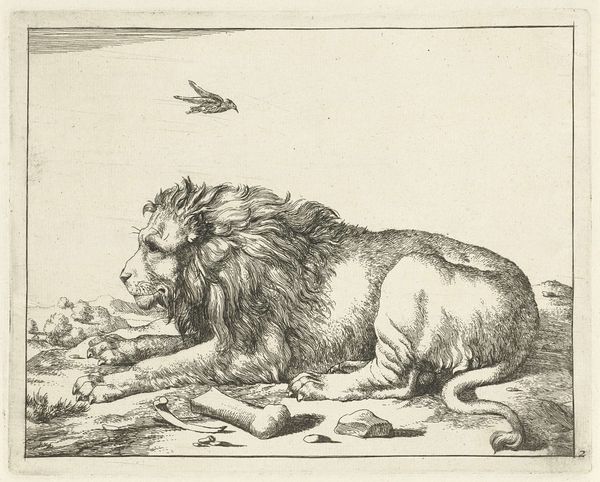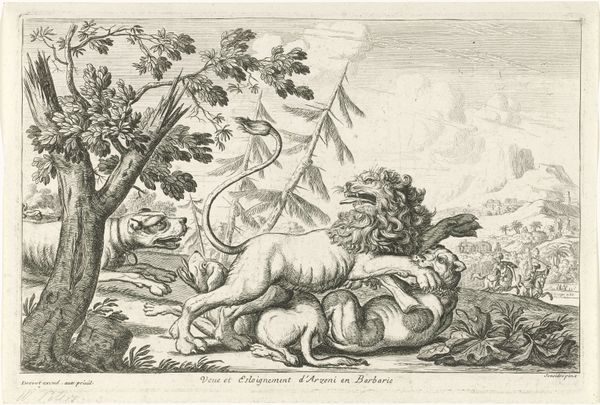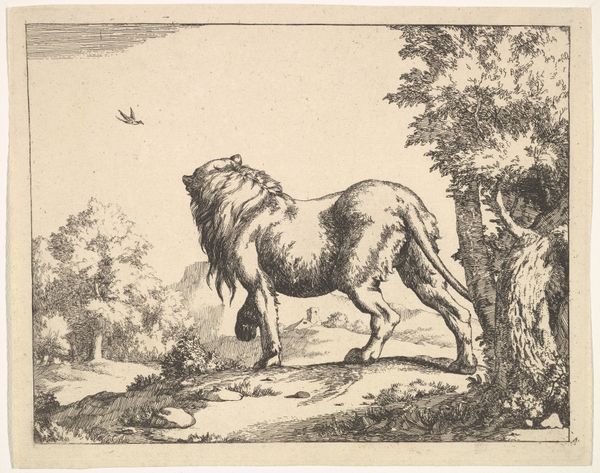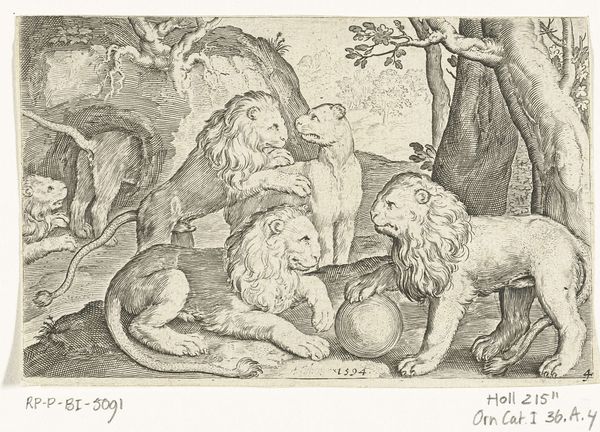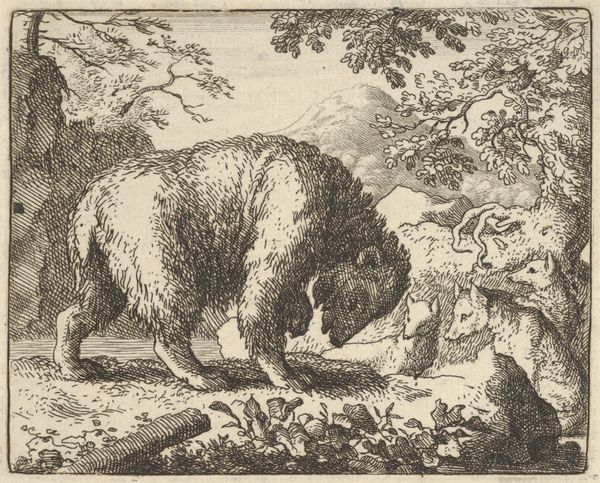
drawing, ink, frottage
#
drawing
#
baroque
#
pen drawing
#
landscape
#
figuration
#
ink
#
genre-painting
#
frottage
Dimensions: height 174 mm, width 225 mm
Copyright: Rijks Museum: Open Domain
Curator: Here we have Marcus de Bye’s "Sleeping Lion," a drawing created in 1664, using pen and ink. What are your initial thoughts? Editor: It’s surprisingly melancholic, isn't it? Not at all the image of roaring power we expect from a lion. There’s a distinct languor in its pose and a heaviness about its form that contradicts the animal’s usual symbolism. Curator: Precisely! The image defies easy categorization. The lion, traditionally a symbol of courage and royalty, is rendered here in a moment of utter vulnerability. This reflects a Baroque sensibility, finding beauty and meaning in even the most mundane moments. How do you think this piece speaks to its time? Editor: Well, during the 17th century, there was growing fascination in the Dutch Republic with naturalism, especially the depiction of exotic animals, often linked with colonial ventures. But de Bye does more than just render an animal; he gives us a character, imbuing the lion with emotion and presence, placing him almost reverentially within a vast landscape. The trees and mountains behind it contrast a world the animal seemingly once roamed freely. Curator: Exactly. I'd also add that it reveals something crucial about the psychological weight of symbols. The lion has, over millennia, signified strength, leadership, and ferocity. Yet, the artist invites us to consider that even archetypes of power experience moments of peace, weariness, perhaps even existential doubt. Editor: It makes me think about the role that exotic animals played back then. They were trophies brought to the Old World by traders and colonizers; but, in doing so, it was to emphasize control and domestication in the so-called wilderness, as proof of dominance of the era. How far we are from these considerations today. Curator: That's a vital point. This is not merely a drawing of a lion; it's a representation shaped by the social and political context of its creation. Even representations of “nature” can often serve human interests and ideas. Editor: So true! The more you analyze the work, the less idyllic it all seems. I shall carry on studying, maybe next time I’ll be less drawn in by its obvious artistic simplicity!
Comments
No comments
Be the first to comment and join the conversation on the ultimate creative platform.
